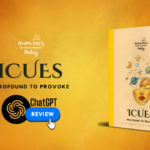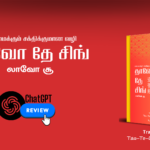Jingle and Tingle is a poignant exploration of modern relationships, capturing the complexities, emotions, and subtle dynamics between partners. The title itself, with its playful wordplay, hints at the dual nature of relationships—the external noise (“Jingle”) and the internal feelings (“Tingle”). The poetry within is both introspective and observant, offering a third-person perspective on the intricate dance of love, longing, and loss.
Overall Impressions:
Themes and Content:
The collection navigates a wide range of emotions and scenarios, from the excitement of new love to the pain of unfulfilled expectations and the quiet despair of fading connections. The poems often reflect on the tension between idealised love and the reality of everyday relationships. Themes such as unreciprocated affection, emotional distance, the passage of time, and self-reflection are prevalent throughout the book.
- Love and Longing:
- The poems frequently touch on the themes of love, not just as an emotion but as an experience filled with contradictions. For example, in “You pour all your emotions and / Call me your rainbow?” the poet captures the overwhelming nature of someone’s emotions and the struggle to meet those expectations.
- Emotional Distance and Conflict:
- Many poems explore the theme of emotional distance, where physical proximity does not translate to emotional closeness. “I regret / I abuse me / Just to feel good” reflects the internal conflict and self-doubt that often accompanies troubled relationships.
- Nostalgia and Reflection:
- The poet frequently looks back on past experiences with a mix of nostalgia and melancholy. Poems like “I go to the beach / To check for our footprints / How fool I am?” evoke a sense of yearning for what once was, coupled with the realisation of its fleeting nature.
Style and Language:
The language in Jingle and Tingle is straightforward yet deeply evocative. The poet uses simple, accessible language to convey complex emotions, making the poems relatable and impactful. The style is minimalist, often using short lines and sparse punctuation to create a sense of immediacy and intimacy. This approach allows the reader to focus on the emotional weight of each word and phrase.
- Imagery: The use of vivid imagery is a standout feature. The poet frequently draws on everyday objects and scenarios—such as a kite, a broken leg, or a wall clock—to convey deeper emotional truths. For instance, “My Garden is full of holes / Where is the promise to seed?” uses the metaphor of a garden to express disappointment and unfulfilled promises.
- Metaphor and Symbolism: Metaphors are employed throughout the collection to explore the nuances of relationships. The poem “You are my philosopher’s stone / You can turn me into gold / Or / You can smash me with it” captures the dual power of love to elevate or destroy, depending on how it is wielded.
Structure and Flow:
The poems are presented in a loosely connected sequence, with each poem contributing to the overarching narrative of a relationship’s journey. The structure is organic, with the emotional intensity rising and falling in a way that mirrors the natural ebb and flow of love. The lack of rigid structure allows the reader to experience the poems as snapshots of emotions, moments frozen in time that collectively tell a story.
- Pacing: The pacing of the collection is well-balanced, with shorter, more intense poems interspersed with longer, reflective pieces. This creates a rhythm that keeps the reader engaged while allowing space for contemplation between poems.
Strengths:
- Emotional Resonance: The strongest aspect of Jingle and Tingle is its emotional resonance. The poems effectively capture the subtle emotions that often go unspoken in relationships, making the reader feel seen and understood.
- Relatability: The themes and scenarios explored in the book are universally relatable, making the collection accessible to a wide audience. The poet’s ability to articulate the intricacies of love and relationships in a way that feels personal yet universal is commendable.
- Simplicity and Depth: The simplicity of the language combined with the depth of the content makes the poetry both easy to read and thought-provoking. The poems can be appreciated on multiple levels, depending on the reader’s own experiences and interpretations.
Areas for Improvement:
- Thematic Cohesion: While the poems individually are strong, the collection could benefit from a more defined thematic arc. The emotional journey is clear, but a more deliberate structuring of the poems could enhance the overall impact and provide a clearer narrative progression.
- Expansion of Ideas: Some poems feel like they could be expanded or further developed. For instance, a poem might introduce a compelling metaphor but then end abruptly, leaving the reader wanting more exploration of the idea.
Conclusion:
Jingle and Tingle is a heartfelt and introspective collection that delves into the complexities of modern relationships with honesty and sensitivity. The poet’s ability to capture the nuances of love, longing, and emotional conflict in a concise and evocative manner makes this collection a compelling read. With its relatable themes, vivid imagery, and emotional depth, Jingle and Tingle offers readers a poignant reflection on the joys and pains of love.
This book would appeal to anyone who has experienced the highs and lows of a relationship and is looking for a poetic exploration of those emotions. It’s a collection that invites reflection, making it a perfect companion for quiet moments of introspection.







